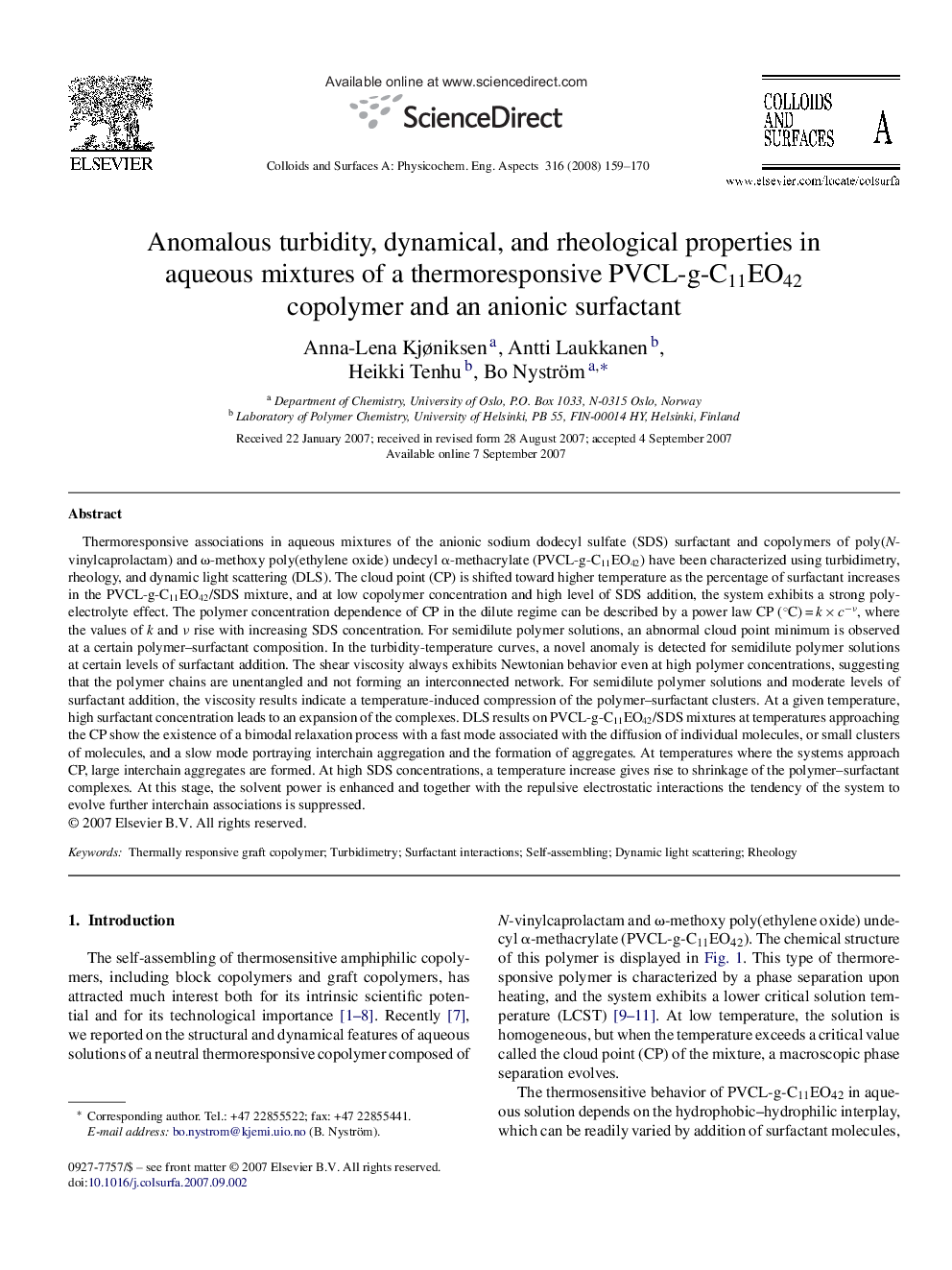| کد مقاله | کد نشریه | سال انتشار | مقاله انگلیسی | نسخه تمام متن |
|---|---|---|---|---|
| 597038 | 1454056 | 2008 | 12 صفحه PDF | دانلود رایگان |

Thermoresponsive associations in aqueous mixtures of the anionic sodium dodecyl sulfate (SDS) surfactant and copolymers of poly(N-vinylcaprolactam) and ω-methoxy poly(ethylene oxide) undecyl α-methacrylate (PVCL-g-C11EO42) have been characterized using turbidimetry, rheology, and dynamic light scattering (DLS). The cloud point (CP) is shifted toward higher temperature as the percentage of surfactant increases in the PVCL-g-C11EO42/SDS mixture, and at low copolymer concentration and high level of SDS addition, the system exhibits a strong polyelectrolyte effect. The polymer concentration dependence of CP in the dilute regime can be described by a power law CP (°C) = k × c−ν, where the values of k and ν rise with increasing SDS concentration. For semidilute polymer solutions, an abnormal cloud point minimum is observed at a certain polymer–surfactant composition. In the turbidity-temperature curves, a novel anomaly is detected for semidilute polymer solutions at certain levels of surfactant addition. The shear viscosity always exhibits Newtonian behavior even at high polymer concentrations, suggesting that the polymer chains are unentangled and not forming an interconnected network. For semidilute polymer solutions and moderate levels of surfactant addition, the viscosity results indicate a temperature-induced compression of the polymer–surfactant clusters. At a given temperature, high surfactant concentration leads to an expansion of the complexes. DLS results on PVCL-g-C11EO42/SDS mixtures at temperatures approaching the CP show the existence of a bimodal relaxation process with a fast mode associated with the diffusion of individual molecules, or small clusters of molecules, and a slow mode portraying interchain aggregation and the formation of aggregates. At temperatures where the systems approach CP, large interchain aggregates are formed. At high SDS concentrations, a temperature increase gives rise to shrinkage of the polymer–surfactant complexes. At this stage, the solvent power is enhanced and together with the repulsive electrostatic interactions the tendency of the system to evolve further interchain associations is suppressed.
Journal: Colloids and Surfaces A: Physicochemical and Engineering Aspects - Volume 316, Issues 1–3, 5 March 2008, Pages 159–170